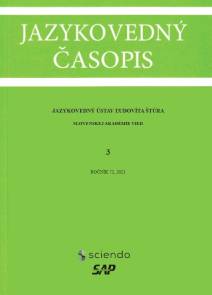What do Modern Languages with Scriptio Continua have in Common?
What do Modern Languages with Scriptio Continua have in Common?
Author(s): Marika ButskhrikidzeSubject(s): Language studies, Theoretical Linguistics, Morphology
Published by: Jazykovedný ústav Ľudovíta Štúra Slovenskej akadémie vied
Keywords: Scriptio continua; word boundary markers; morphological typology; Burmese; Thai; Lhasa Tibetan;
Summary/Abstract: Theoretically, it is possible for any language to practice scriptio continua (a style of writing without spaces or any markers between the words/sentences) due to the very nature of language: a system of arbitrary and discrete elements. Two universal functions of sound: distinctive and delimitative, ensure that any language has boundary markers for meaning-bearing units that facilitate both language production and comprehension. We argue that some languages are more adaptive to this writing style than others. The languages that have predominantly isolating/analytic or agglutinative constructions with tones and limited combinatory rules (restricted phonotactic constraints) are more suitable to have scriptio continua than inflectional languages with complex phonotactic rules and free stress. This correlation is examined in three modern languages that to this day practice scriptio continua: Burmese, Thai, and Lhasa Tibetan.
Journal: Jazykovedný časopis
- Issue Year: 72/2021
- Issue No: 3
- Page Range: 821-838
- Page Count: 18
- Language: English

